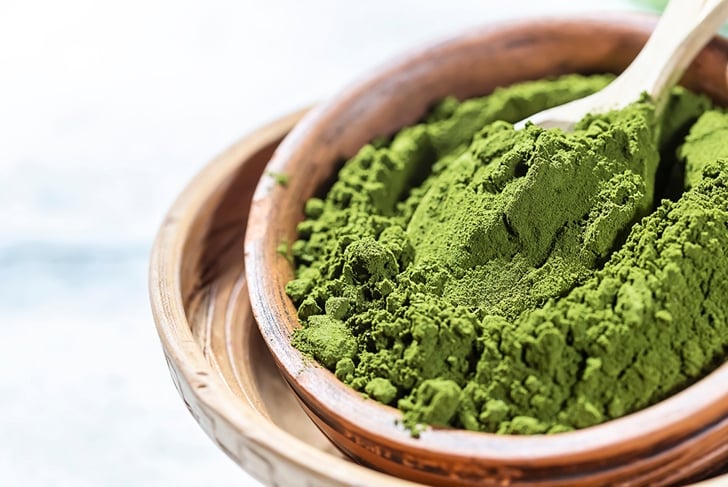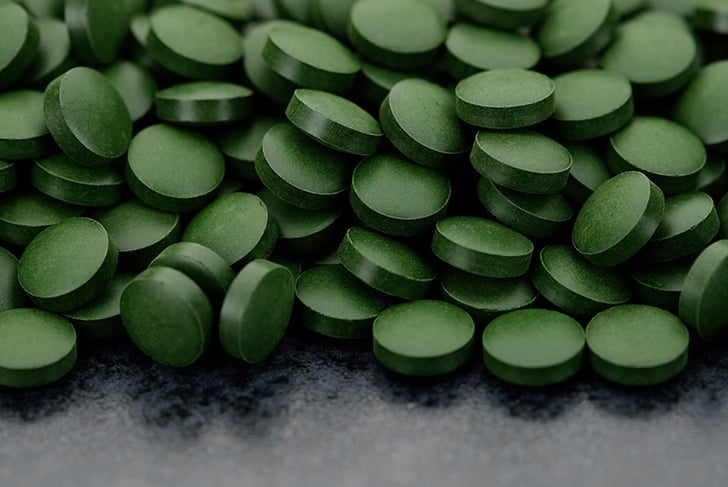
Sacha inchi seeds

Sacha inchi seeds’ mother plant (Plukenetia volubilis) is recognizable by its four-to seven-pointed star-shaped fruit, which contains the cherished seeds. While the fruit itself is inedible, the encapsulated seeds, when roasted and shelled, are a tasty snack.
Traditional origin
Indigenous to the Amazon Rainforest, sacha inchi seeds (also referred to as Inca peanuts) have been cultivated for human consumption for centuries. They’re also now cultivated commercially in South East Asia. Today, those who live in the Amazon still eat the seeds and use them for oil and flour.
Modern medicinal uses for sacha inchi

Sacha inchi seeds’ possible health benefits, based on preliminary research, include
- increasing HDL (good) cholesterol levels
- lowering LDL (bad) cholesterol levels
- protecting kidney and liver function
- fighting infection
- reducing blood pressure
- maintaining blood sugar balance
Sacha inchi seeds, along with being complete proteins (containing all nine essential amino acids), contain high levels of omega fatty acids (3, 6, and 9). These high levels of healthy fatty acids have shown, in recent studies, to lower total cholesterol and LDL (bad) cholesterol levels. They are also teeming with fibre and the mood-boosting amino acid tryptophan.
Buying sacha inchi seeds

Sacha inchi seeds can be found at most natural health food stores, often packaged in snack-sized packages, and may be lightly seasoned, sweetened with caramelized cane sugar, or covered in chocolate for a tasty treat. They can also be found as powders or oils.
Eating sacha inchi seeds
You can also incorporate roasted sacha inchi seeds into dishes. With a taste like roasted dark peanuts, the seeds can be munched by themselves, or added into your granola or trail mix. Try adding them to salads or crusting tofu with them (crushed, of course).
Vegan appeal
What has helped sacha inchi seeds appeal to vegans is that they are loaded with omega-3s—nearly three times as much as walnuts. A study into the characterization of the seeds showed that they are 27 percent protein and 35 to 60 percent oil high in unsaturated fatty acids, making them a nutritious addition to a plant-based diet.
Sacha inchi seeds can lend interesting texture and taste to all kinds of baked goods. Check out our delectable Chocolate Crunch Brownies recipe (starring, of course, sacha inchi seeds).
Gogi berry

The goji berry (Lycium barbarum and Lycium chinense), also referred to as wolfberry, is a tart, brightly coloured fruit that grows in many places, but is cultivated primarily in China.
Traditional use and origin
For thousands of years, the goji berry has been used in traditional Chinese medicine. Its earliest mention in Chinese literature dates back to the first century.
Goji berries were believed to offer anti-inflammatory effects as well as liver support, and some touted it for its longevity-promoting abilities. One legend describes a herbalist who took goji berries in combination with other herbal tonics and lived until the ripe age of 252!
Modern medicinal uses for Gogi berries

Although research is still digging into their efficacy, goji berries are widely taken for a variety of ailments, including diabetes, high blood pressure, tinnitus, and more. Goji berries have extraordinarily high levels of antioxidants, in particular zeaxanthin, which is linked to eye health and protects the eyes against sun damage.
A 2011 study showed that healthy elderly participants who supplemented with goji berries daily for three months experienced reduced age-related drusen formation. (Drusens are small yellowish lesions in the eye that cause macular degeneration.)
As well, goji berries contain high levels of vitamin A (140 percent of our daily recommended intake in a single 28 g serving), which is necessary for good eye health, reproduction, immunity, cellular communication, and normal function of the lungs, heart, and other organs.
Buying goji berries

Goji berries are typically available in their dried form but may also be sold as berry juice or freeze-dried goji berry powder, as well as ingredients in many natural food products like cereals, granola bars, and teas.
Eating goji berries
Throw dried goji berries into smoothies, sprinkle them over a bowl of steaming oatmeal, or simply pop them in your mouth for a tangy snack.
Check out our yummy Coconut Goji Berry Snowball Truffles recipe.
Spirulina & Chlorella

Often called nature’s super algae, chlorophyll-rich spirulina (Arthrospira platensis) and chlorella (Chlorella vulgaris) are superfood powerhouses of essential nutrients including trace minerals, iron, vitamins, essential fatty acids, and highly absorbable amino acids.
Spirulina
Spirulina gets its rich colour from chlorophyll, the super-pigment that allows plants to absorb and metabolize light. It’s rich in protein, B vitamins, copper, and iron and also contains abundant antioxidants.
Traditional origin
Tiny blue-green algae, spirulina grows naturally in mineral-rich alkaline lakes, often near volcanoes. The largest natural concentrations of spirulina are found at Lake Texcoco in Mexico, around Lake Chad in Central Africa, and along the Great Rift Valley in east Africa.
Modern medicinal uses for spirulina

Spirulina’s possible health benefits include
- boosting immunity
- reducing allergy symptoms
- fighting infection
- boosting probiotic growth (helpful after a bout of antibiotics)
- protecting against liver damage
- lowering LDL (bad) cholesterol levels
- protecting against elevated blood pressure
- enhancing muscle strength and endurance
Chlorella

Single-celled freshwater green algae, chlorella contains high levels of chlorophyll—more, in fact, than spirulina or any leafy green. It’s also 50 to 60 percent protein (a complete protein, containing all 9 essential amino acids) and a great source of B vitamins and iron, and is often taken by those with deficiencies.
Traditional origin
This protein-rich freshwater algae was first thought of as a possible food source during the late 1940s and early 1950s when hunger and food scarcity was a global concern.
Modern medicinal uses for chlorella

Chlorella’s possible health benefits include
- boosting immunity
- lowering cholesterol levels
- balancing blood sugars
- maintaining healthy blood pressure
- enhancing aerobic endurance
- protecting eye health
Buying spirulina and chlorella

Not such tasty treats in their raw form, most people choose supplement forms like capsules, tablets, extracts, or powder—either individually or in a blend with other green food ingredients.
Eating spriulina and chlorella
Powder forms can be added to smoothies, baked goods, or blended with a natural liquid sweetener (honey, maple syrup, or agave) and a nut or seed butter, then drizzled over cereal, crackers, or fruit salad.
Check out the delicious Chocolate-Dipped Spirulina Shortbread recipe.




